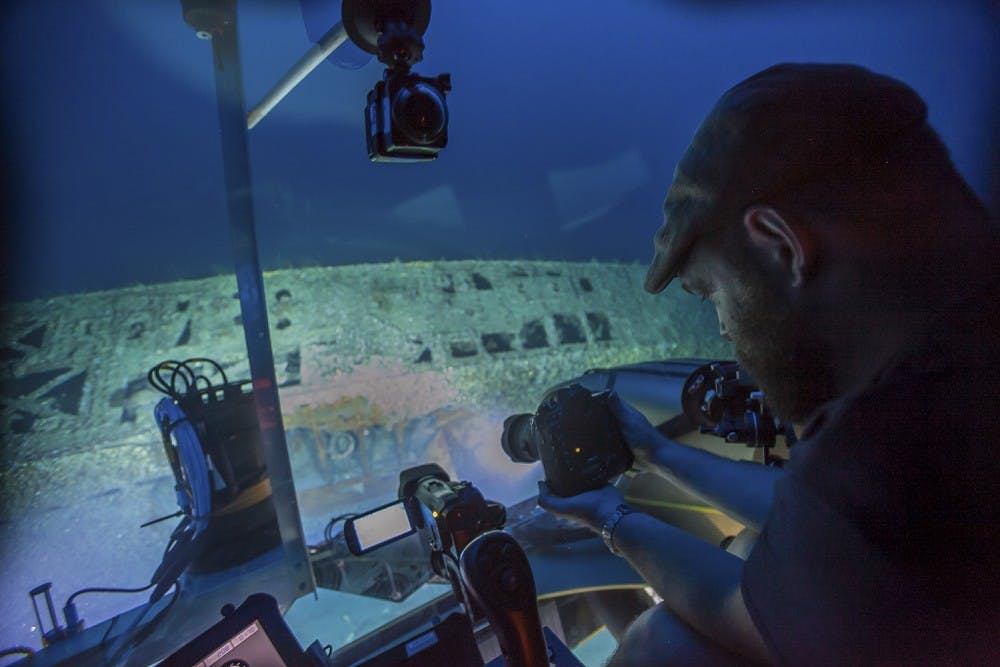The conclusion of a six-year search for U-boat 576, a German World War II U-boat off the coast of Cape Hatteras, brought that feeling to the surface.
“Studying this wreck for so long, I knew everything about it,” said Hoyt, who works at the National Oceanic and Atmospheric Administration. “I knew it was there, but when you drop through the water column and you’re 800 feet underwater, and there’s two gigantic, pristine shipwrecks in front of you — it’s very real, and very cool.”
U-576 and a Nicaraguan freighter had been resting on the ocean floor since 1942.
“The U-576 sank the Nicaraguan flagged freighter Bluefields and severely damaged two other ships,” said a media release from NOAA. U-576 was bombed by a U.S. Navy aircraft shortly afterward and sunk within minutes of the freighter.
The waters off of North Carolina’s coast have long been known as the “Graveyard of the Atlantic,” where hundreds of shipwrecks litter the ocean floor. Less known, however, are wrecks like U-576, and finding it was not easy, said William Hoffman, an archaeologist with the Bureau of Ocean Energy Management.
“The battle that caused the sinking is well-documented, but not the precise location,” he said. “ So we were surveying for years using SONAR and other equipment to look through the search area, and two years ago we found the wreck.”
It took two more years before they were able to view the wreck in person.
“The idea is to sort of virtually raise them from the depths using laser scanning and photogrammetry to create highly accurate 3D models,” Hoyt said. “Then, theoretically we can go back in 10-years time and do the same survey and see how it’s degraded, and then try to mitigate those effects.”



